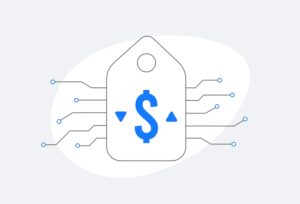Data analysis's influence on optimizing customer engagement is not a new concept. From simple segmentations such as sales-based percentiles to predictive models such as likelihood-to-churn, using data analysis to influence how a company engages with their customers is now the norm.
Lately, “big data” – the sheer quantity of data points generated from an ever-expanding number of transaction and social media channels, among other sources – is attracting increased attention in many areas, including customer engagement.
This is, at least in part, due to the intersection of two trends. The first is the development and adoption of devices such as smart phones and the explosion of apps for them that capture and store massive amounts of data.
The second is that technologies such as Haddoop, Netezza and Vertica are either coming of age or entering the mainstream, making it viable to store and process these massive amounts of data.
Big data pushes some key aspects of customer engagement across thresholds, creating unique opportunities for competitive advantage. But big data creates some big challenges too.
Customer Data Management
Master data management – cleansing and matching and mastering of data, among other activities – is the foundation of customer data management. Big data can push the limits of these processes, which are traditionally optimized for managing discrete attributes (name, age, income, etc.) and not the behaviorally oriented data (page visits, phone calls, financial transactions, etc.) germane to big data.
Conversely, big data can provide the opportunity to improve matching and identity resolution based on behavioral clustering. For example, two different sets of records in a database can have somewhat similar personally identifying information such as name, address, phone, etc., which aren't similar enough to constitute a match. However, they may also have very similar behavioral profiles — profiles that are very rich and descriptive due to big data.
The similarities in the two record sets' behavior may be enough to push the records over the match threshold and allow them to be collapsed into one. This reduces duplication in the database and allows for a richer, more accurate profile of individuals.
Analytic Model Execution
Big data presents challenges to analytics, too. Running analytic models on big data requires technologies that support massively parallel processing, which rely on a single high-powered piece of hardware as opposed to disparate set of processing units. And just as important – if not more important – it requires technologies that bring the analytics to the data, instead of bringing the data to the analytics, which is no longer feasible at the scale of big data.
Targeting and Messaging
Some big data sources, such as telecom records and social networking information, provide relationships among data entities. Relationship analytics, such as social graphs and influencer analytics, work well on this type of data and can provide valuable insight for targeting and messaging.
For example, knowing that a customer influences someone – someone a marketer may not even know – who has a high likelihood to buy a given products makes that customer a great target for a “refer a friend” campaign.
While correlation and clustering algorithms are effective on “normal” sized data sets, they thrive on big data, where can incorporate trillions of records and hundreds of variables. Correlation and clustering analytics often use explicit attributes and behaviors to infer additional implicit attributes and behaviors. This process predicts what a recipient will or will not respond well to, resulting in more granular segmentation and more precise targeting and messaging.
Consider knowing that an individual browsing a website is highly likely to navigate to, and spend extended time viewing, content about soccer — and not just soccer, but English Premiere League soccer. This allows a marketer to personalize content and keep that individual on the site longer, providing additional opportunities for ad impressions and offers.
Timing and Cadence of Communication
Because big data is usually behaviorally oriented, and therefore time-oriented, it lends itself extremely well to time-series analysis, such as forecasting. The longer the time series, the richer the picture and the more accurate the forecast.
Furthermore, the longer the time series, the better the analytics are able to establish behavioral patterns, and thereby detect abnormal behavior. Abnormal behavior detection can be invaluable in determining the optimal “when” of customer communication, as abnormal behavior often reveals a window of opportunity where a person is in the process of making a change, or making a decision, and therefore more open to be influenced by relevant messaging.
For example, if a banking customer has an abnormally high frequency of “foreign ATM” (i.e., an ATM owned by another bank) transactions, it is highly likely that they have recently moved or are starting to engage with a competitive bank.
These are just a few examples of the impact of big data on customer engagement. When thresholds are crossed, new opportunities arise and savvy companies figure out clever ways to exploit them. Examples like these are just the tip of the iceberg.



 Network
Network

